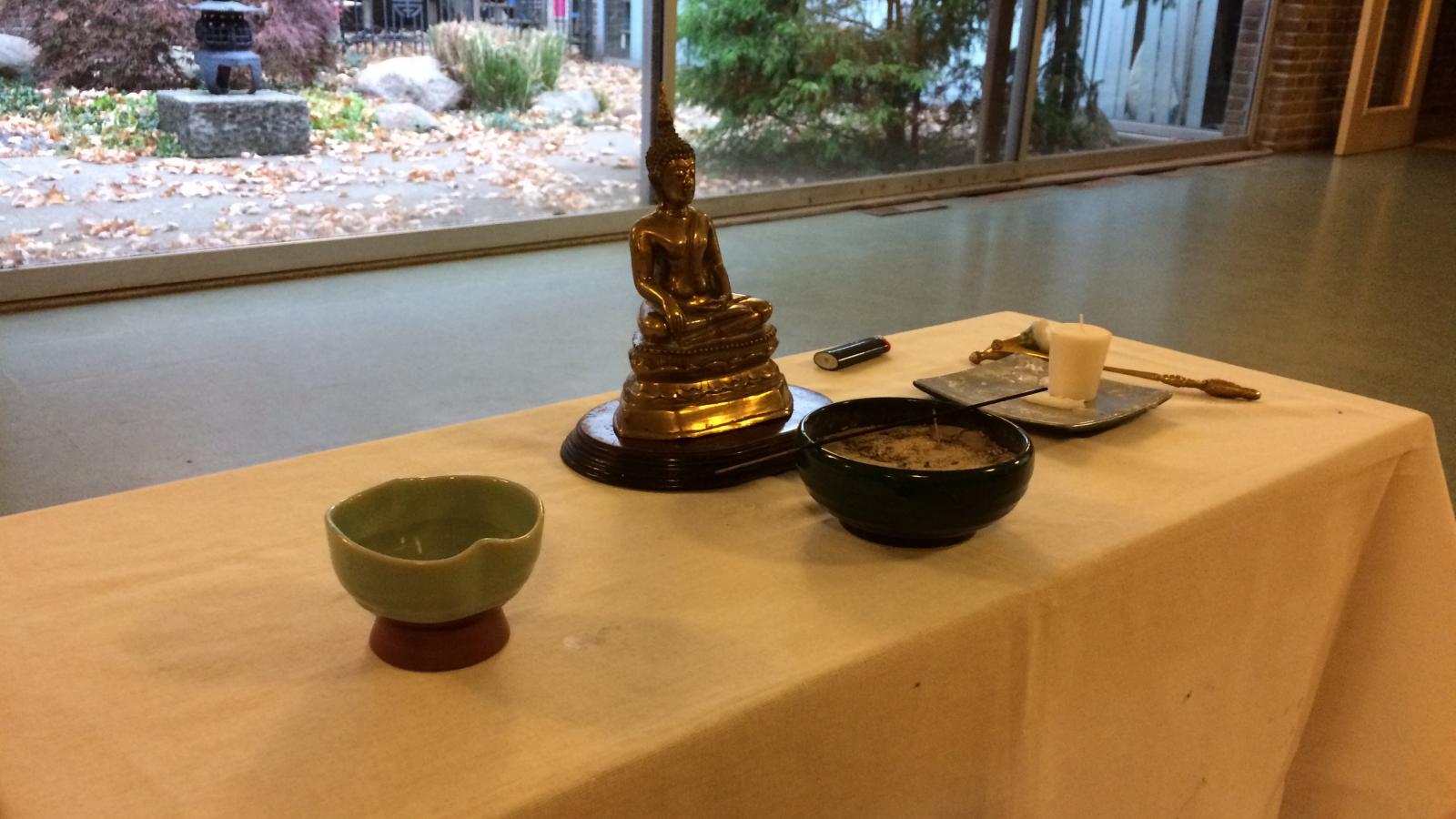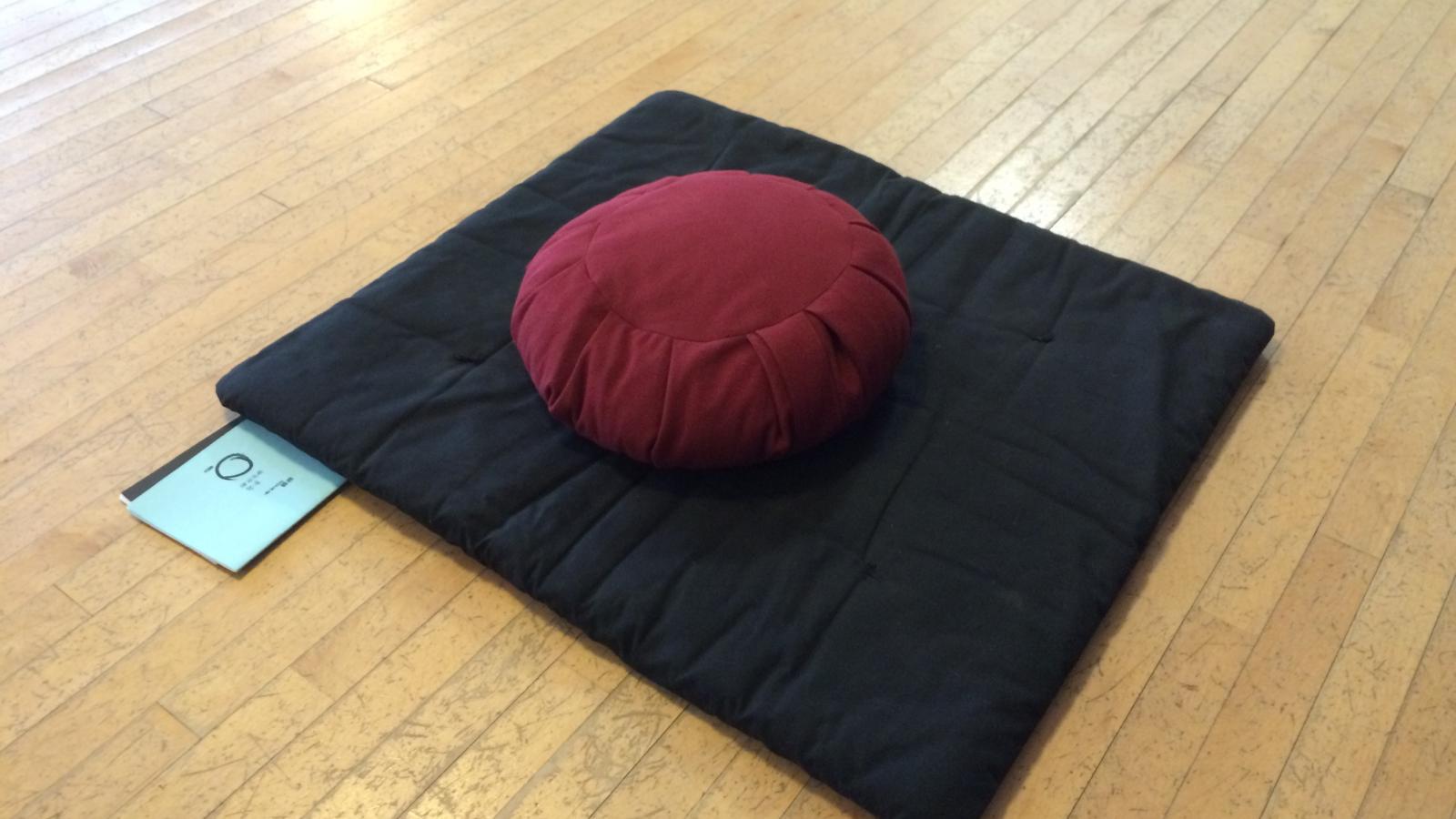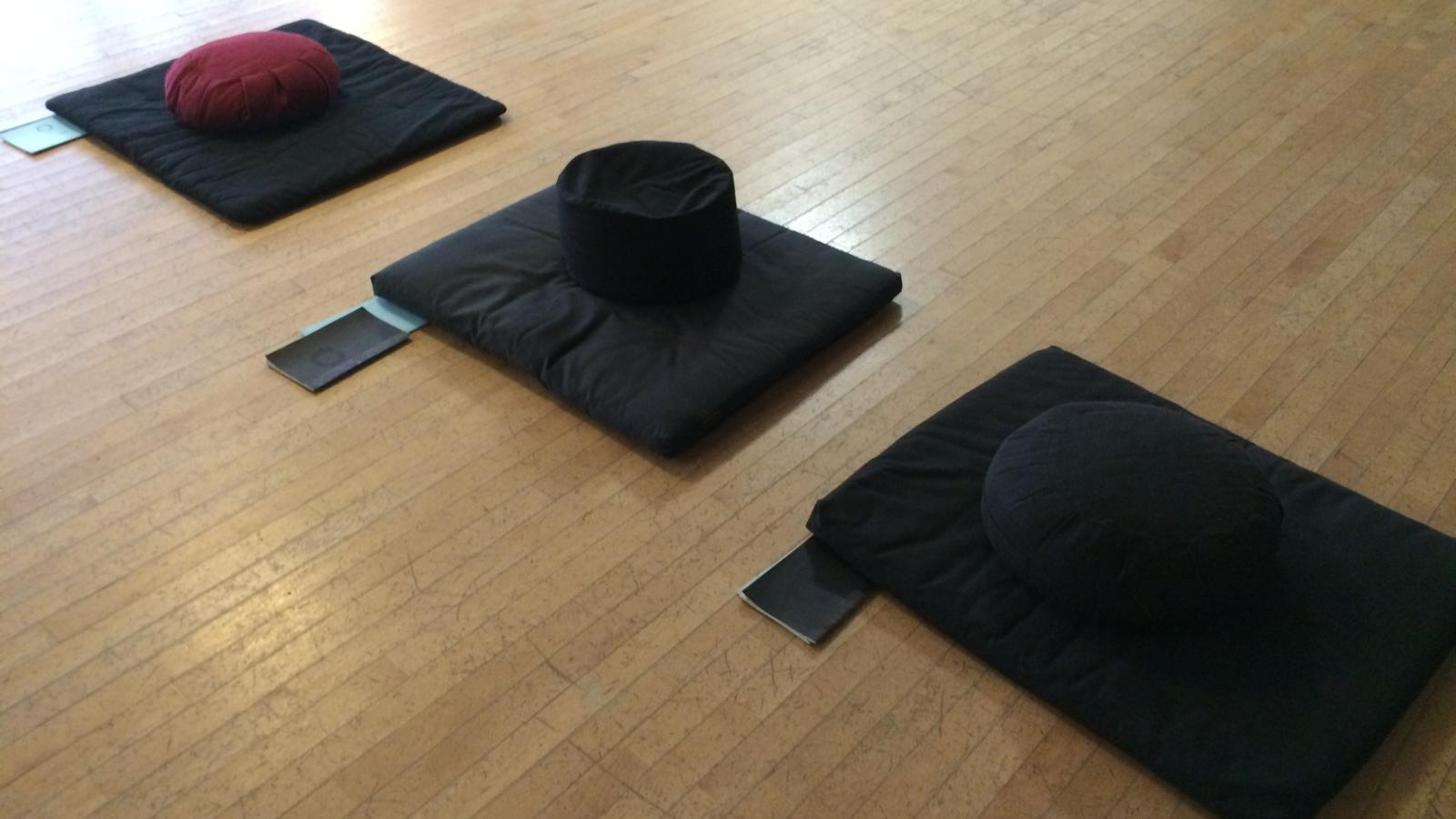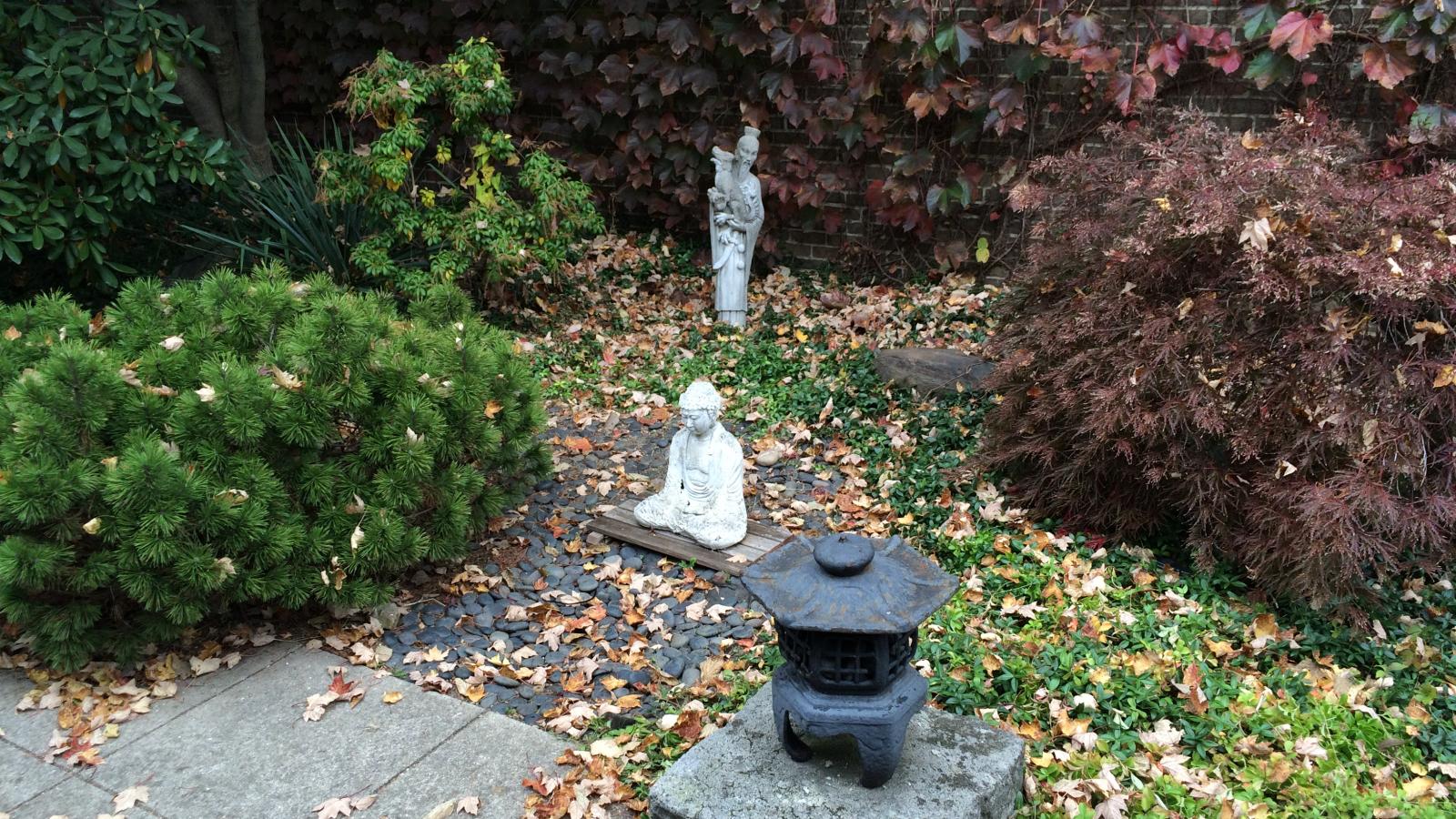Zen Columbus Sangha is a Zen Buddhist community that meets and practices in the meeting hall of the First Universalist Unitarian Church. Sangha is a Buddhist term for a community of monks or nuns. However, in Zen Columbus’s case the Sangha is exclusively lay Buddhist. The Sangha rents a room twice a week from the church. The First Universalist Unitarian Church is located at 93 Weisheimer Rd. in the northern Columbus neighborhood of Clintonville, a fairly diverse area. There is also some overlap in membership between the Sangha and First Universalist Unitarian Church. It was mentioned multiple times that the First Unitarian Universalist Church is quite hospitable and the Sangha is able to store their supplies in the church. The room where the Sangha meets is rather modest, as it is just a hall with wooden floors and high ceilings. Zen Columbus prepares the room by setting out two rows of mats and cushions, as well as a small altar with a statue of Buddha, a candle and incense. Zen Columbus Sangha was created in 2004, as an offshoot of the Columbus Zen Corner. Today, the Sangha does not hold a formal affiliation with any particular Zen teacher and is therefore considered independent. Zen Buddhism emphasizes the practice of nonverbal meditation and reflection.
The Sangha focuses on meditation sessions. They meet twice a week, on Saturday mornings and Tuesday evenings. Each meditation session is initiated with the lighting of the candle and incense followed by the striking of the clapper once and inkin bell thrice. The following meditation session is comprised of a 25-minute period of silent sitting meditation (zazen), a 5-minute silent walking meditation (kinhin), another 25-minute zazen, chanting of the sutras and prostrations. The zazen and kinhin are led by a time keeper while the chanting of the sutras and prostrations are led by a meditation leader. The meditation session can be slightly overwhelming to those new to Zen Buddhism, yet all are welcome to participate alongside members of the Sangha. There are usually around 20 practitioners from all backgrounds at most meditation sessions.
“You hear the bell and you habituate to learning to come back to yourself and come back to the present moment. So it’s a good way to begin the meditation.” - John Josephson, a meditation leader at Zen Columbus Sangha
The clip above is the inkin bell being struck three times initiating the meditation. It is also referred to as a mindfulness bell, as its purpose is to call the members back to themselves and the present moment. It is the sound that breaks through the noise of the members getting situated and calls them to silence. However, a single strike of the bell is also used to end the meditation, effectively pulling the members back into everyday life again.
“The chanting or repeating of things is to try to as a group talk about the things you believe in and agree on. As in a lot of Eastern religions chanting is also another way to enter a meditative state. It’s the idea that if you are chanting that is what you’re focusing on, that sound. So your conscious thinking brain, that always has a narrative, tends to quiet down a little bit and you can enter into a more profound space.” - Eric Zimmer, podcast producer/ co-creator of The One You Feed Podcast and frequenter of the Sangha
This clip is a portion of the chanting of the sutras that follows the second session of zazen. The sutras are a collection of important Zen teachings and writing, both historical and current. The importance lies within ideas contained in them, as well as the repetition. This is where the importance of the Sangha truly comes in. The sutras are chanted as “all beings, one body,” a phrase vital to Zen. The chanting might sound somewhat quiet; this is because each member is supposed to chant so they can hear themselves. Also the overarching theme of silence most likely dampens the sound.
As one might imagine, the meditation sessions are comprised mostly of silence. So the addition of sound breaking the silence seems quite significant. The silence is an extreme contrast to the everyday sounds of life, in which silence seems increasingly rare. However, the silence also intensifies the background noise that seems cast aside when compared with speech. Silence also allows for a more calming environment
The Sangha has orientations to meditation as well as dharma discussions twice a month. They also attend silent, whole day retreats about once a season. They are extremely welcoming and open to new members and anyone interested or curious about Zen.
More information can be found here.
Special thanks to everyone at Zen Columbus Sangha for being so accommodating!
Field Researcher: Jake Kowal








